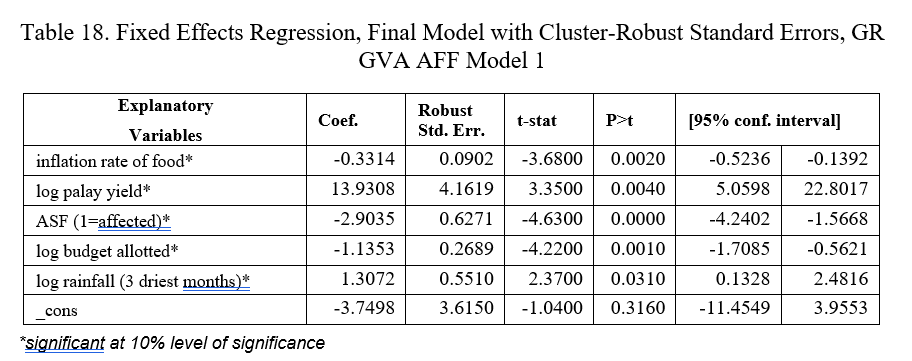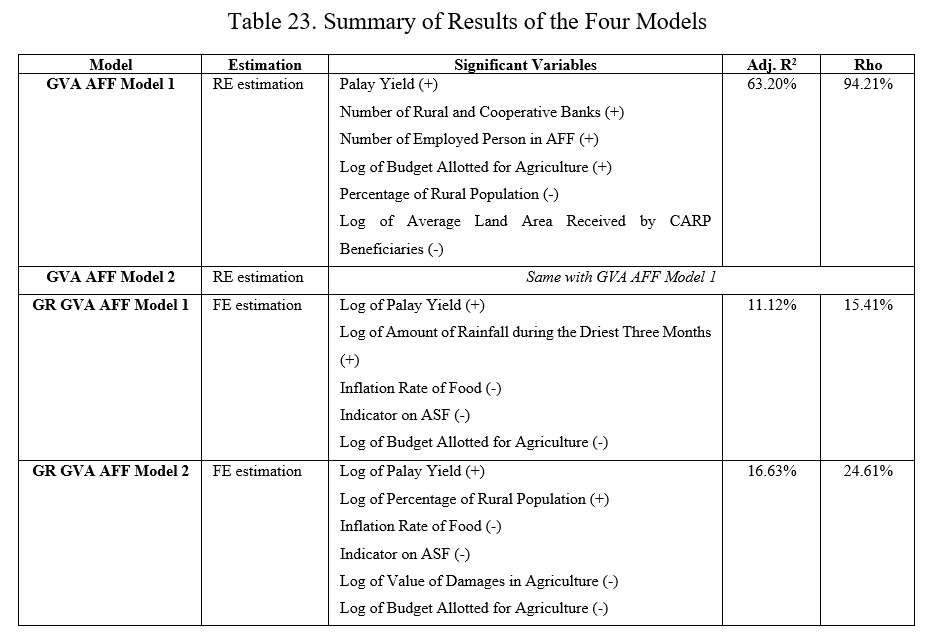PB44-Examining the Performance of Agriculture in the Economy of the Philippines: Evidence from Regional Panel Data
Conference
65th ISI World Statistics Congress
Format: CPS Poster - WSC 2025
Keywords: agriculture, economy, fixed-effects, panel, panel data, random-effects
Session: CPS Posters 15
Wednesday 8 October 4 p.m. - 5 p.m. (Europe/Amsterdam)
Abstract
This study examined the performance of agriculture, as measured by Gross Value Added in Agriculture, Forestry and Fishing (GVA AFF) and the growth rates of GVA AFF, of the 16 regions of the country (excluding NCR) from 2005 to 2022. The researcher aimed to establish the link between the regional performance of agriculture and selected social, macroeconomic, and environmental factors. The models are expected to supply information and insights on the factors that contribute to the performance of agriculture.
This research employed three (3) estimation methods, namely the Pooled Ordinary Least Squares estimation, Fixed Effects estimation, and Random Effects estimation.
For the GVA AFF as the dependent variable, the final model was estimated through Random Effects estimation. This model was formulated to identify the factors that influence the absolute level of GVA AFF across different regions and periods.
For every additional metric ton on the yield of palay per hectare, the GVA AFF for the region tends to increase by PhP 29.18 billion, holding other variables constant. This is consistent with the discussion of Balisacan and Ravago (2015) that one of the most important drivers of production growth is improvement in productivity growth and yield as one of the commonly used indicators of agricultural productivity.
A 1% increase in the proportion of employed persons in AFF is estimated to increase the GVA AFF for the region by PhP 0.42 billion, holding other variables constant. An increase in the proportion of employed persons in AFF implies a higher labor input in the AFF sector.
Moreover, holding other variables constant, for every increase in the number of rural and cooperative banks in the region, GVA AFF tends to increase by PhP 0.06 billion.
Also, a 1% increase in the budget allotted for agricultural activities tends to increase the GVA AFF for the region by PhP 0.04 billion, holding other variables constant.
For the growth rate of GVA AFF as the dependent variable, Fixed Effects model was estimated. This model was formulated to determine the factors that influence the agriculture’s growth trajectory.
The yield of palay per hectare was also a significant factor for the growth rate of GVA AFF. That is, a 1% increase in the yield of palay per hectare tends to increase the growth rate of GVA AFF for the region by 0.15%.
The country is affected by African Swine Fever (ASF) since 2019, it is important to measure the impact of ASF to the agriculture sector. It was found that the GVA AFF for the regions with cases of ASF is 2.39% lower than those regions which were not affected with ASF, holding other variables constant.
A 1% increase in the inflation rate of food tends to decrease the growth rate of GVA AFF for the region by 0.37%, holding other variables constant.
In addition, a 1% increase in the value of damages in agriculture due to natural events and calamities tends to decrease the growth rate of GVA AFF for the region by 0.01%, holding other variables constant.
Figures/Tables
Figure 1

Table 10

Table 14

Table 18

Table 22

Table 23

